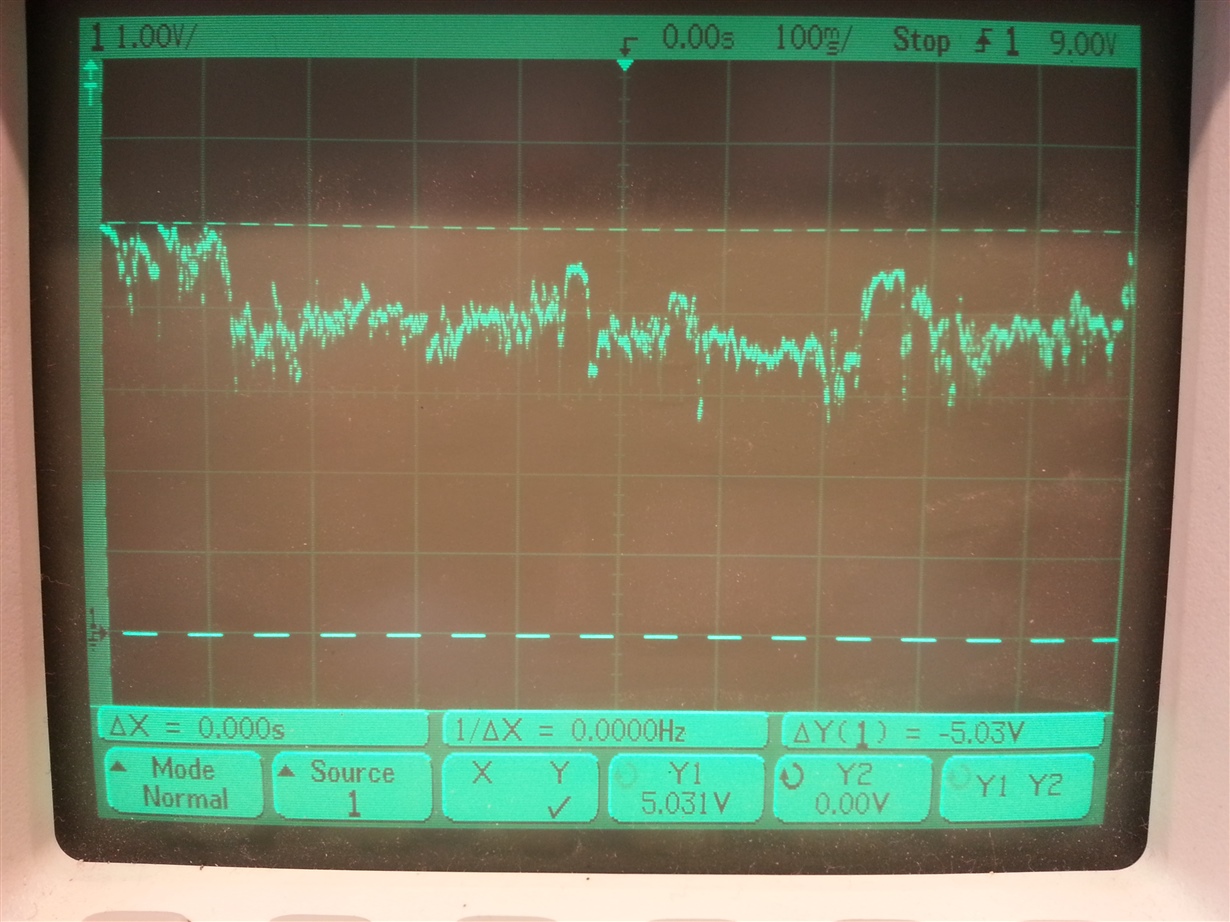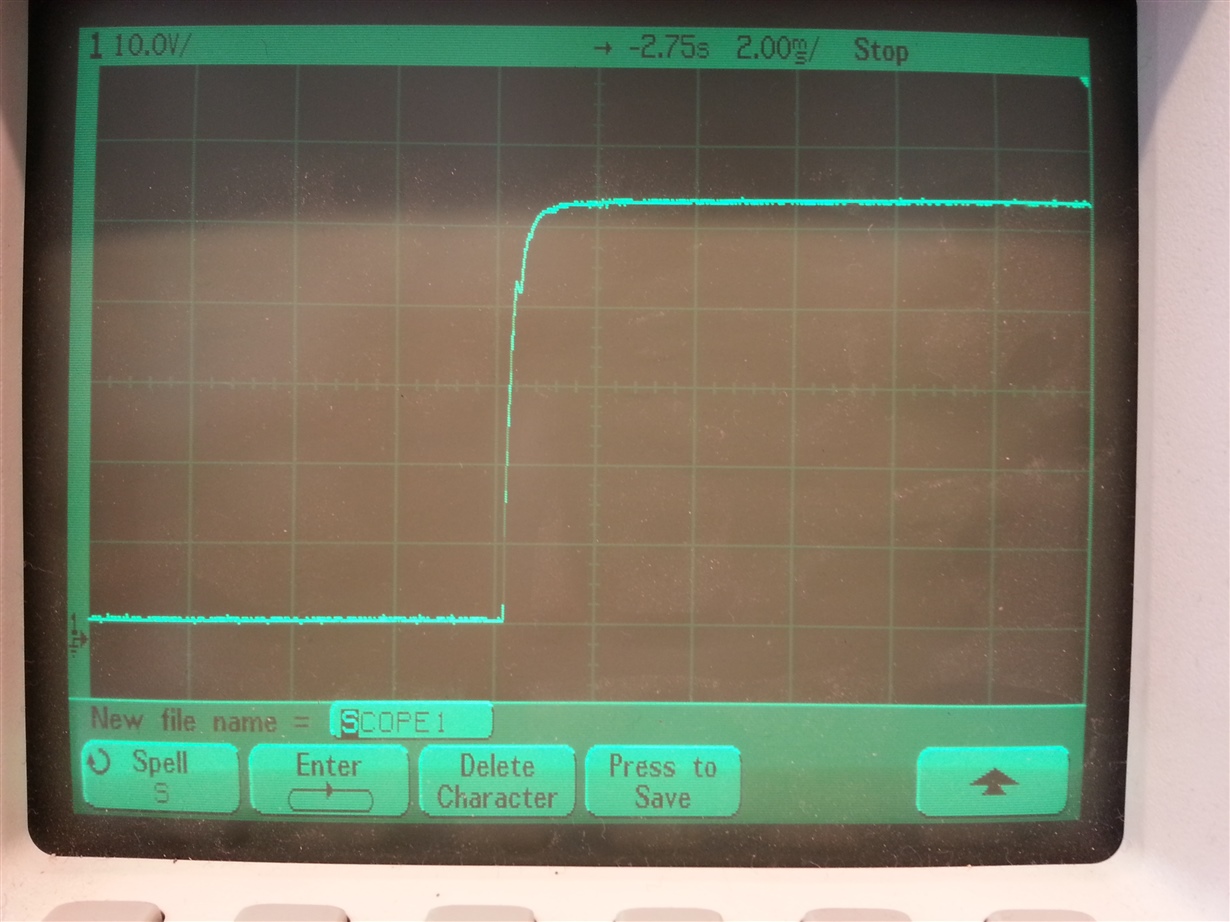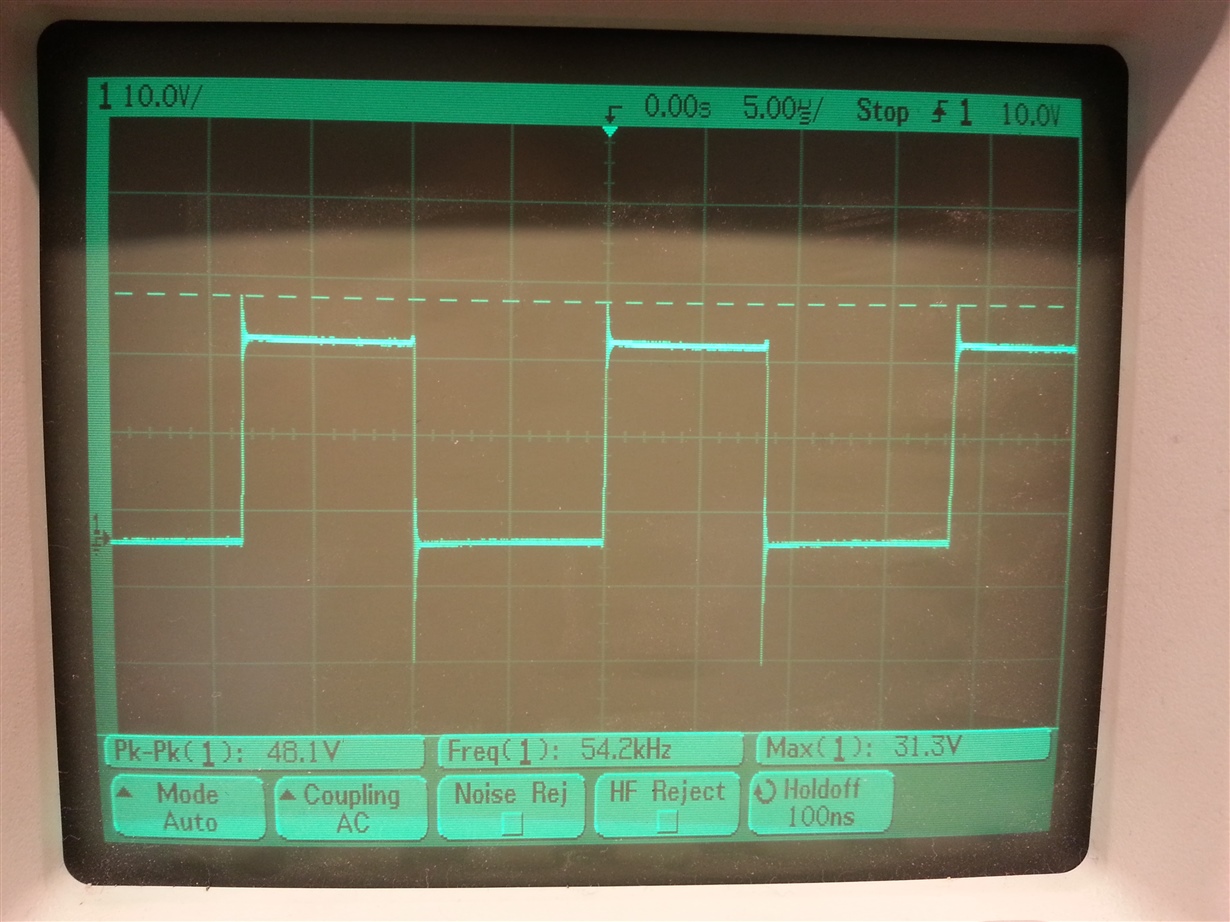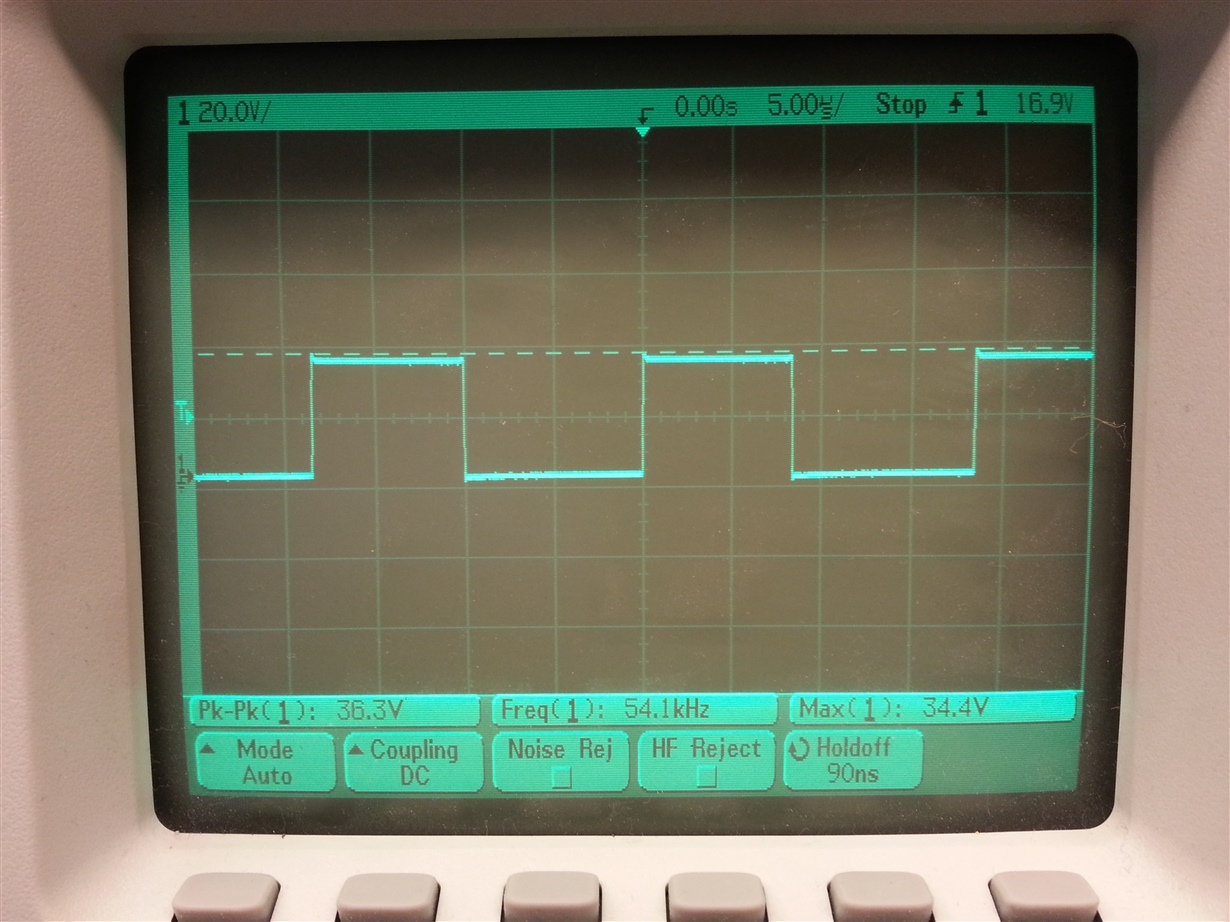Hello!
I have a DRV8301-HC-C2 kit with a F28069 Picoolo controlling a low-inductance motor.
I have had problems with this kit as the motor have very low inductance. This causes the current-measurement to break down when I load the motor. To fix this problem, I tried to replace the MOSFET's with some new ones with lower gate charge. With these MOSFET's, I can run the motor with much higher PWM-frequency, and my teory is that this will cause less interference on the current-measurement.
After replacing the MOSFET's, I first run the kit with a 32V power supply. Everything was running fine. I then changed to my 54V batterypack. The motor made a small sound, and then the DRV8301 went into GVDD under voltage error. I measured the GVDD, and it iwas about 3V.
I also see that the 5V output from the DRV8301's buck converter is very unstable. Sometimes it is as low as 3,5V, with a lot of noice.
Is it possible that the new MOSFET's with the low gate charges causes the DRV8301 to blow up? Or is there something else causing the fault?
Here is the data for the OLD MOSFET's:
Vishay SUM110N06 3m9H - R_ds=3,9ohm, I_d=110A, V_ds=60V, Q_g=200, PWM_max(calculated)=25kHz
Here is the data for the new MOSFET's:
Fairchild Semiconductor - R_ds=3ohm, I_d=120A, V_ds=100V, Q_g=86, PWM_max(calculated)=56kHz
I am a bit tired of replacing the DRV8301 chip now (this will be my 4th time). It has blown up by different reasons. On the positive side, my SMD-soldering-skills is getting better and better... :-)
My project is also discussed in this page: e2e.ti.com/.../1470208





